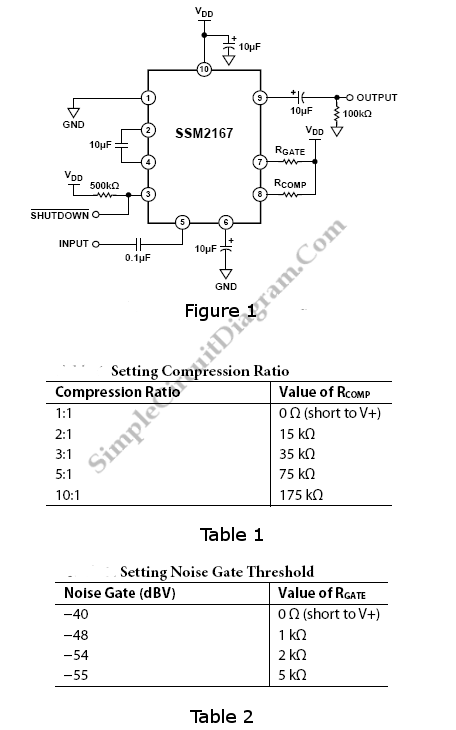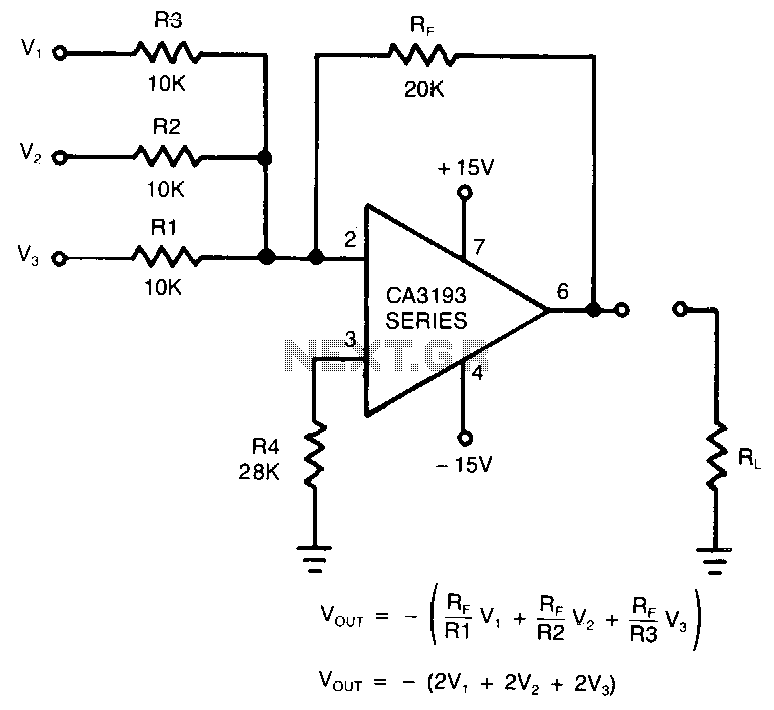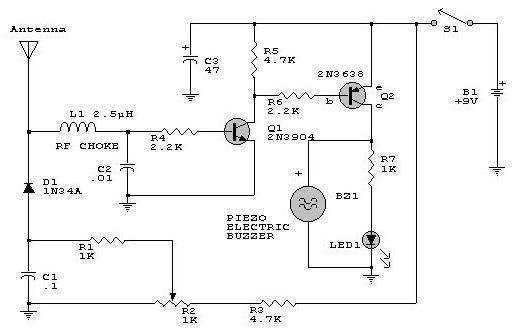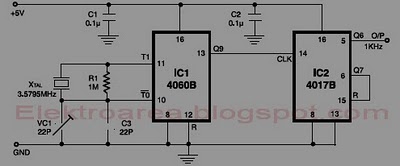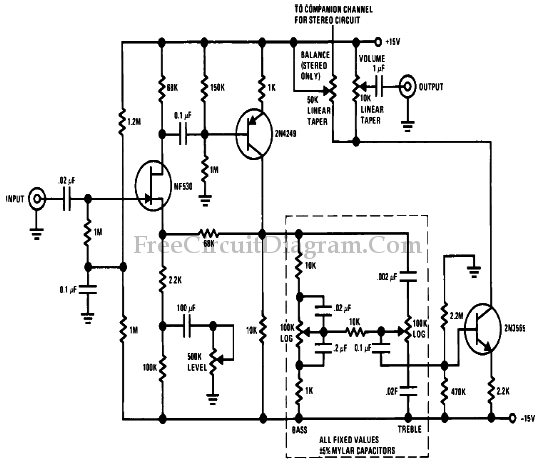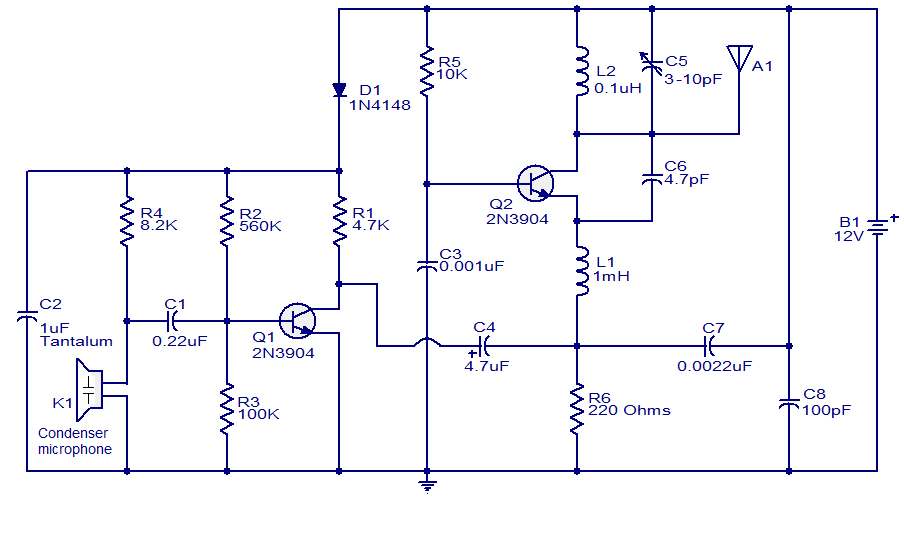
Electronics Circuit Application: New Vacuum Tube Amplifier

The power supply has been simplified. Power transformers and rectifiers have been omitted, and some components from the MOSFET voltage regulator circuits have been removed, including 1N5242 zener diodes between the source and gate and 10k resistors in series with the gate. These components provide protection against accidental short circuits but do not affect the operating point. The complete power supply schematic is provided below. 6SN7 tubes are utilized instead of 12AU7 tubes for the driver stage. Both tubes share similar plate characteristics, but the 6SN7 has a higher maximum plate voltage (450V vs. 330V) and greater plate dissipation (3.75W vs. 2.75W per section). The 6SN7 can be regarded as a more robust version of the 12AU7. All resistors are rated at 1/2 watt, except for R3P, R4P, and R5C through R8C (68K), which are rated at 2W, and R9C through R12C (20 ohm), which are 1W made from two 10-ohm resistors in series. R9S through R12S (200 ohms) are rated at 2W. Capacitor voltage ratings should exceed minimum requirements, although higher ratings may result in larger and more expensive components. Higher voltage-rated capacitors are often selected based on availability or cost-effectiveness from surplus sources. Minimum voltage ratings are as follows: C1G: 100V, C2G: 400V (600V is preferable; necessary without a time delay), C3G and C4G: 400V (600V is preferable), C3M and C4M: 400V, C5G through C8G: 600V, CBS2, CBS4, CBS6, and CBX1 through CBX3: 100V. The voltage ratings for many power supply capacitors are indicated on the circuit board wiring diagrams below. Some feedback connections may be challenging to trace. ORN connects between the 20-ohm output transformer secondary feedback winding and R3F near TU3, while VLT connects to R4F near TU4. BLU and BLK on the output transformer secondary speaker winding connect to the output tube cathode circuits. BRN and VIO are not utilized as they are the ultra-linear taps. In the original version of TENA, a switch was provided to select output tube screen grid connections between BRN and VIO (UL mode) and GRN and YEL (triode mode). The input stage TU1 functions as a simple voltage gain stage with local negative feedback derived from the R1B, R1C voltage divider. It is capacitively coupled to the split load phase inverter TU2. The capacitor has an unusually low value of 0.01 µF due to TU2’s exceptionally high input impedance, which is several Megohms. Capacitive coupling allows the voltage level in TU2 to be set for maximum output while ensuring the AC current in TU2 is equal but 180 degrees out of phase with the current in TU1. Consequently, the net AC current drawn by these two tubes from V+420 is zero, effectively isolating the audio signal from the power supply, which does not need to supply AC current. In conventional designs, AC signals often flow through electrolytic capacitors, which can degrade audio quality due to leakage and memory effects. The TENA design aims to draw zero net AC current from all power supply outputs, particularly in a push-pull configuration, up to the power level where one of the output tube pairs begins to cut off. The Plitron toroidal transformer is chosen for its exceptional bandwidth, exhibiting -3 dB at over 200 kHz, resulting from high primary inductance and low leakage inductance. This is a significant improvement over conventional EI transformers. High bandwidth is crucial because output transformers inherently exhibit a second-order roll-off, which can lead to instability in the presence of negative feedback unless careful phase compensation is applied. Phase compensation tends to reduce bandwidth, but this is not an issue with Plitron toroidal transformers. However, it is essential to note that toroidal transformers are less tolerant of DC imbalance compared to EI transformers and may saturate under such conditions.The power supply has been simplified. Power transformers and rectifiers have been omitted and some parts have been omitted from the MOSFET voltage regulator circuits: 1N5242 zener diodes between the source and gate and 10k resistors in series with the gate. These parts serve as protection in case of accidental short circuits, but don`t affect the operating point. The full power supply schematic is shown below. 6SN7`s are used instead of 12AU7`s for the driver tubes. They have the same plate characteristics, but they have higher maximum plate voltage (450 vs. 330 V) and greater plate dissipation (3. 75 vs. 2. 75 W per section). Think of the octal-based 6SN7 as a 12AU7 on steroids. All resistors are 1/2 watt unless noted, and with the following exceptions. R3P, R4P and R5C through R8C (68K) are 2W. R9C through R12C (20 ohm) are 1W: I used 2-10 ohm resistors in series to make them. R9S through R12S (200 ohms) are 2W. Capacitor voltage ratings: It never hurts to go over the minimum, though the capacitors will be larger and may cost more. I often use caps with higher voltage ratings because I have them on hand or found them at a good price in an electronics surplus shop.
Here are some minimum ratings: C1G: 100V. C2G: 400V (600V would be better; necessary without the time delay); C3G and C4G: 400V (600V would be better); C3M and C4M: 400V; C5G through C8G: 600V; CBS2, CBS4, CBS6 and CBX1 through CBX3: 100V. The voltage ratings of many of the power supply capacitors are shown on the circuit board wiring diagrams, below.
Some of the feedback connections may be a little hard to trace. ORN goes between the 20 ohm output transformer secondary feedback winding and R3F near TU3. Similarly, VLT goes to R4F near TU4. BLU and BLK on the output transformer secondary speaker winding go to the output tube cathode circuits. BRN and VIO are not used. They are the ultra-linear taps. In the original version of TENA there was a switch to select output tube screen grid connections between BRN and VIO (UL mode) and GRN and YEL (triode mode).
Input stage TU1 is a simple voltage gain stage with local negative feedback, derived from the R1B, R1C voltage divider. It is capacitively coupled to split load phase inverter TU2. The capacitor has an unusually low value- 0. 01 µF- because TU2 has an exceptionally high input impedance- several Megohms. The advantage of capacitive coupling is that it allows the voltage level in TU2 to be set for maximum output and it allows the ac current in TU2 to be precisely equal to, but 180 degrees out of phase with, the current in TU1.
The net ac current drawn by these two tubes from V+420 is therefore zero. This is an effective way of isolating the audio signal from the power supply, which doesn`t need to supply ac current. In conventional designs ac signal often has to flow through electrolytic capacitors, which are grungy leaky devices with memory- harmful to audio quality.
I designed TENA to draw zero net ac current from all power supply outputs (easy to do in a push-pull design), at least up to the power level where one of the output tube pairs starts cutting off. We chose the Plitron toroidal transformer because of its exceptional bandwidth: -3 dB at over 200 kHz, the result of high primary inductance (the good stuff) and low leakage inductance (the bad stuff- kind of like HDL and LDL cholesterol)- much better than can be achieved with a conventional EI transformer.
High bandwidth is important because output transformers have an intrinsic second order rolloff, which can make them unstable in the presence of negative feedback unless careful phase compensation is applied (see Feedback and Fidelity). Phase compensation reduces the bandwidth, which is not a problem with the Plitron toroidal transformers.
But this bandwidth comes at a price- toroidal transformers are much less tolerant of dc-imbalance than EI transformers; they may saturate at dc imbalances as l 🔗 External reference
Here are some minimum ratings: C1G: 100V. C2G: 400V (600V would be better; necessary without the time delay); C3G and C4G: 400V (600V would be better); C3M and C4M: 400V; C5G through C8G: 600V; CBS2, CBS4, CBS6 and CBX1 through CBX3: 100V. The voltage ratings of many of the power supply capacitors are shown on the circuit board wiring diagrams, below.
Some of the feedback connections may be a little hard to trace. ORN goes between the 20 ohm output transformer secondary feedback winding and R3F near TU3. Similarly, VLT goes to R4F near TU4. BLU and BLK on the output transformer secondary speaker winding go to the output tube cathode circuits. BRN and VIO are not used. They are the ultra-linear taps. In the original version of TENA there was a switch to select output tube screen grid connections between BRN and VIO (UL mode) and GRN and YEL (triode mode).
Input stage TU1 is a simple voltage gain stage with local negative feedback, derived from the R1B, R1C voltage divider. It is capacitively coupled to split load phase inverter TU2. The capacitor has an unusually low value- 0. 01 µF- because TU2 has an exceptionally high input impedance- several Megohms. The advantage of capacitive coupling is that it allows the voltage level in TU2 to be set for maximum output and it allows the ac current in TU2 to be precisely equal to, but 180 degrees out of phase with, the current in TU1.
The net ac current drawn by these two tubes from V+420 is therefore zero. This is an effective way of isolating the audio signal from the power supply, which doesn`t need to supply ac current. In conventional designs ac signal often has to flow through electrolytic capacitors, which are grungy leaky devices with memory- harmful to audio quality.
I designed TENA to draw zero net ac current from all power supply outputs (easy to do in a push-pull design), at least up to the power level where one of the output tube pairs starts cutting off. We chose the Plitron toroidal transformer because of its exceptional bandwidth: -3 dB at over 200 kHz, the result of high primary inductance (the good stuff) and low leakage inductance (the bad stuff- kind of like HDL and LDL cholesterol)- much better than can be achieved with a conventional EI transformer.
High bandwidth is important because output transformers have an intrinsic second order rolloff, which can make them unstable in the presence of negative feedback unless careful phase compensation is applied (see Feedback and Fidelity). Phase compensation reduces the bandwidth, which is not a problem with the Plitron toroidal transformers.
But this bandwidth comes at a price- toroidal transformers are much less tolerant of dc-imbalance than EI transformers; they may saturate at dc imbalances as l 🔗 External reference
